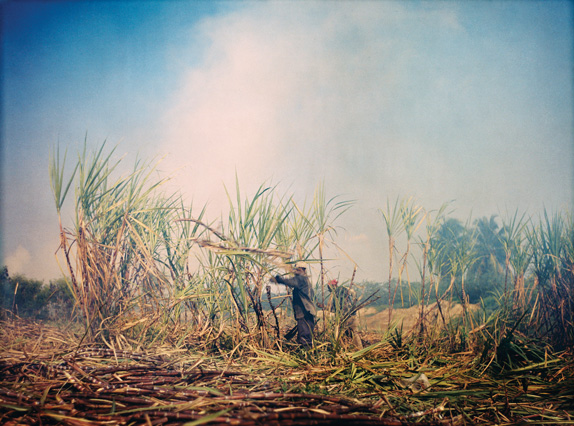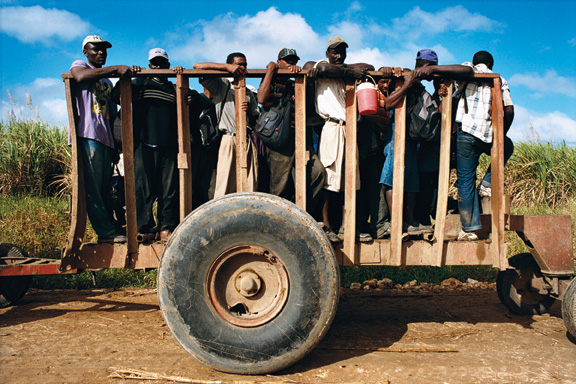March
2007
Slaves
in Paradise
Featured Photographer: Céline Anaya
Gautier
|
In Dominican Republic, Uncle Tom’s cabin never did disappear.
Close to private luxury resort beaches, hidden by an impenetrable curtain
of
sugar cane, there are wooden insalubrious barracks grouped into Bateys.
These improvised villages, with no water, no electricity, shelter entire
Haitian families. After entering the Bateys, you cannot escape its misery:
men work until exhaustion in the sugar cane plantations, women try to
ensure their families’ survival, children born from Haitian parents
are condemned to be slaves themselves… —Slaves
in Paradise
Each year, approximately 20,000 Haitians cross the border into the Dominican
Republic to work on sugar cane plantations, whereupon they are subject
to forced labor, restrictions of freedom, inadequate living environments
and dangerous working conditions. The U.S. is the largest consumer of
Dominican Republic sugar.
In 2005, photographer Céline Anaya Gautier and sound engineer Esteban
Colomar spent three months documenting the lives of sugar cane braceros and the
inhabitants of the Bateys. They were accompanied by two Catholic priests, Father
Christopher Hartley and Father Pedro Ruquoy, who have been working endlessly
to address issues of modern slavery in these fields.
Combining Céline’s photo exhibition with Esteban’s sound collection
of Haitian songs chanted by the sugar cane workers, an international project
on modern slavery was created. The exhibit will run in Paris from May 15 to June
15 and is accompanied by a conference at La Sorbonne, addressing the Dominican
sugar cane industry. Furthermore, the project was transformed into a book Esclaves
au Paradis (Slaves in Paradise), featuring 80 of Céline’s photographs
and a bonus CD of songs from the sugar fields recorded by Esteban. The photographs
and recordings are also featured in the documentary The Price of Sugar (Uncommon
Productions, 2007).
The two are also planning an International Day Against Slavery event on May 10,
to support the work carried out by Fathers Hartley and Ruquoy.
The following is a sampling of Céline’s work documenting the lives
of slaves in paradise. Reprinted with permission.
For more information visit www.esclavesauparadis.org and www.thepriceofsugar.com.
 |
The burning sugar cane
fields of the Guatemaltèque family. |
 |
Vehicle transport of Haitians to Dominican
Republic, December 2004. Region of San Pedro de Marcoris, Viccini
Family plantation.Every year, more than 20,000 Haitians cross the
Dominican Republic
border to work in the sugar cane plantations, persuaded by traffickers
to find a well paid job. They arrive in the plantations, after a
one week journey, without knowing what awaits them. Their identity
papers are taken away from them during the cutting season, and are
often never returned to them. |
| |
|
|
| © STEALTH TECHNOLOGIES INC. |
|
|


